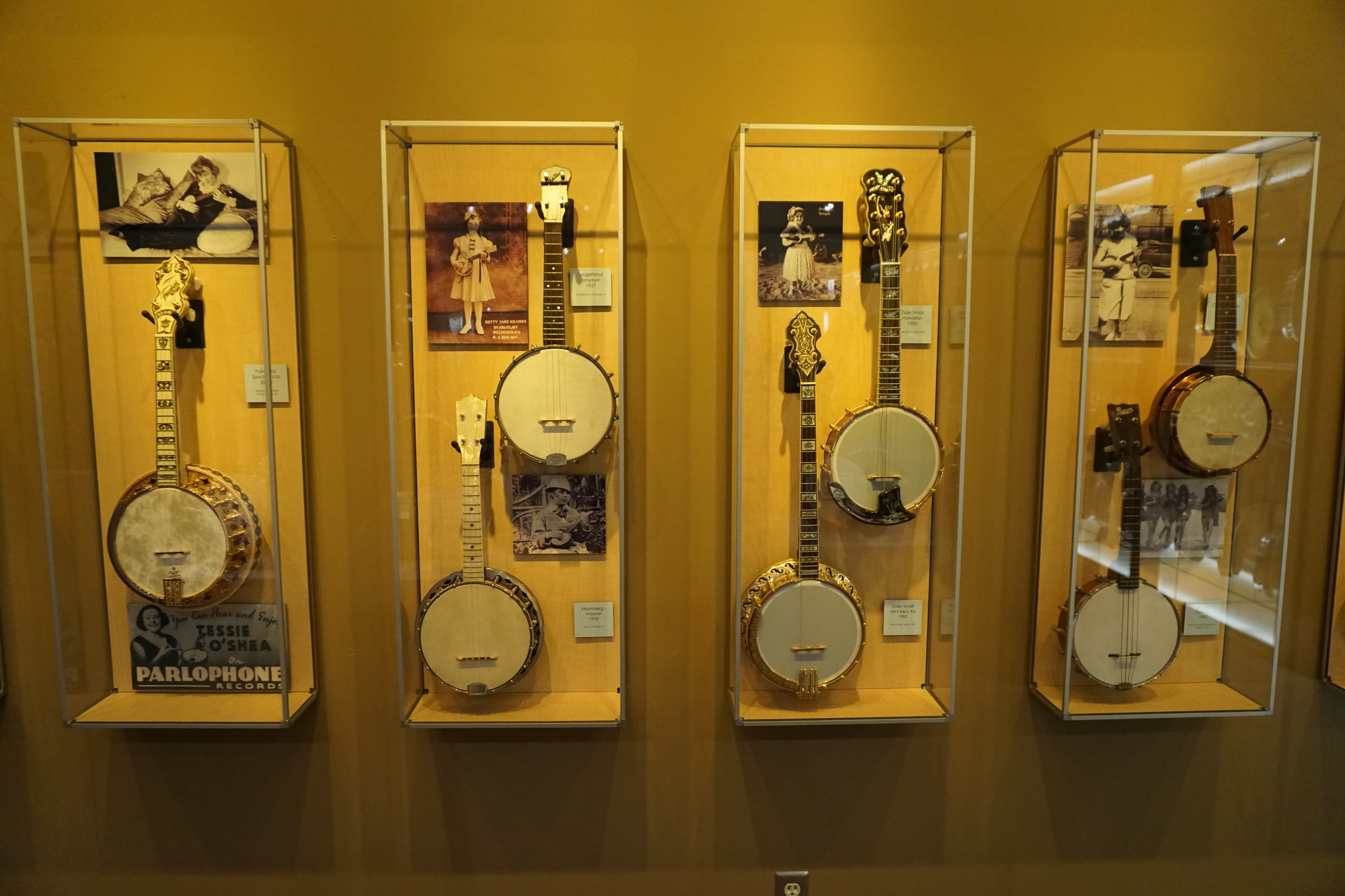Banjulele
The Banjulele (sometimes Banjolele or Banjo-Ukulele) is an instrument created from the body of a banjo with the fingerboard, strings, and tuning of a ukulele[1]. It looks banjo like and is roughly the same size as a ukulele. In such, it projects sound like a banjo, but with a gentler non-metallic tone [2]. Known in America as the banjo-ukulele, the British simply refer to it as a ukulele[3]. The origins of this particular instrument are unclear as the words banjo and ukulele were used together on different patents around the same time; however, John A. Bolander or the Keech brothers are generally credited with the invention of the Banjulele.
The Keech Brothers
Kelvin and Alvin Keech were born in Hawaii during the early 1890s where they lived and studied ukulele before moving to San Francisco where they began making and selling the “Keech Art Ukulele” at the Keech Studios on Powell Street[4]. Their studio also served as a place to teach ukulele lessons. Both brothers were actively involved in the local music community, playing in Hawaiian and Jazz bands, and providing Hawaiian music for events, parties and concerts[5]. These performances were where the banjo ukulele was first introduced. Sometime after the Pan-Pacific International Exhibition in 1915 Alvin worked with John Seckler repairing instruments at the Keech-Seckler Musical Instrument Repair Co. on 213 West 9th Street[6]. During World War 1 Kelvin Joined the United States Army and was sent to France in September of 1918 where he stayed to perform in The White Lyres, a jazz band, despite his discharge in 1919 [7]. Alvin remained in America making, selling, and demonstrating his banjo ukulele. By 1920 both brothers were in London where they once again began to manufacture and sell what they now coined “Banjuleles” with great success[8]. Later on in his career Kelvin became a prominent radio announcer[9] while Alvin continued in the banjulele trade, creating a multitude of arrangements for both ukulele and banjulele.
_______________
[1]"Banjulele." Grove Music Online. Oxford Music Online. Oxford University Press. Web. 21 Nov. 2017.
[2] Magazines, Hearst. Popular Mechanics. Hearst Magazines, 1917.
[3]Tranquada, Jim, and John King. The Ukulele: A History. University of Hawai’i Press, 2012. pp 112.
[4]Tranquada 113.
[5]Tranquada 113.
[6] Unknown. Los Angeles City Directory 1916. Vol. 1916, Los Angeles Directory Company, 1916.
[7] Tranquada 113.
[8] Tranquada 113.
[9] ‘Kelvin Keech’. OTRRpedia Database of Old Time Radio Programs and People, https://www.otrrpedia.net/getpersonF.php?PN=3359. Accessed 13 Nov. 2017.
